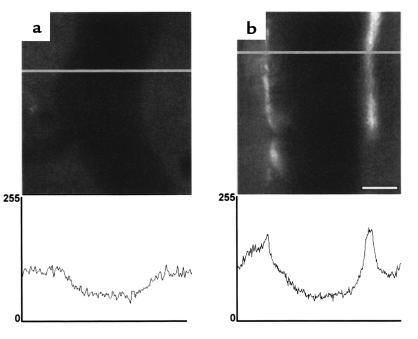J. Clin. Invest. 106:411–420 (2000)
During the final stages of producing this manuscript for publication, an error was introduced in Figure 1. The correct version, accompanied by the legend, appears below. We regret the error and have provided corrected reprints to the corresponding author: Dhananjaya K. Kaul, Albert Einstein College of Medicine, 1300 Morris Park Avenue, Bronx, New York 10461, USA
Phone: (718) 430-3702; Fax: (718) 430-8969; E-mail: kaul@aecom.yu.edu.
Figure 1.
Representative fluorographs of cremaster venules in βS mice (top) and their corresponding DHR fluorescence profile analysis (bottom). (a) Normoxic control. (b) After 3 hours of hypoxia and 30 minutes of reoxygenation, the peaks of DHR activity correspond to fluorescence intensity in the vascular endothelial cells. Bar = 10 µm.



